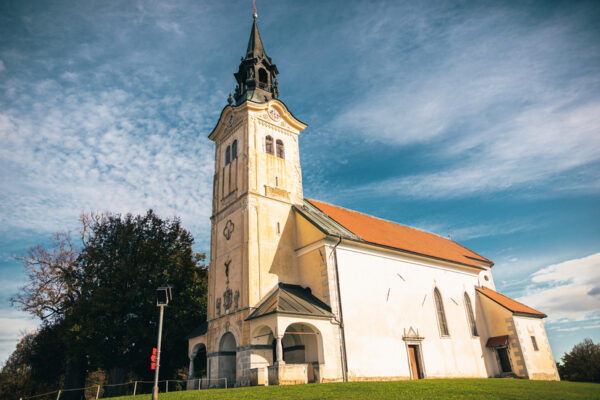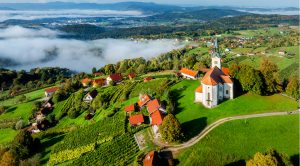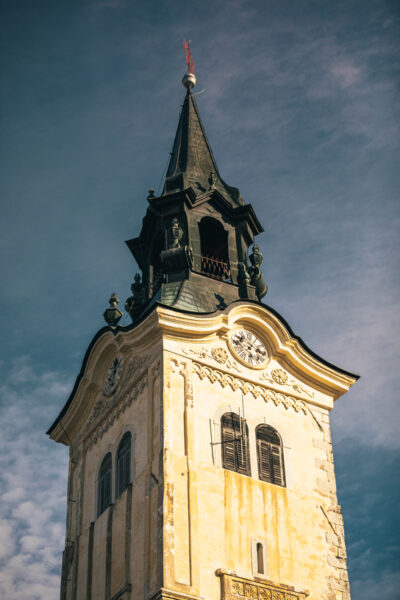Church of the Nativity of Virgin Mary
Perched atop Trška Gora at 428 meters above sea level, the Church of the Nativity of Virgin Mary is one of the most important cultural monuments in the Dolenjska Region. With its remarkable history, rich architectural heritage, spiritual significance, and breathtaking views of the Krka Valley, it has drawn pilgrims and visitors for centuries.
History and Origins
The church’s origins reach far into the past, closely linked to the Stična Monastery and local viticulture. The original church was overseen by Cistercian monks from Stična, who lived in the area, tended dominical vineyards, and celebrated Mass three times a week either here or in St. Thomas’s Chapel at nearby Bajnof. The current structure was commissioned by Abbot Jakob Reinprecht and built in 1621 on the foundations of the older church. It was consecrated on April 27, 1625. On this occasion Bishop Rinaldo Scarlichi of Trieste—later Bishop of Ljubljana—granted a forty-day ecclesiastical indulgences.

Architectural Design
The church masterfully combines elements of Mannerism and Gothic tradition, making it one of the finest examples of sacred architecture in Slovenia. The exterior is dominated by a striking bell tower adorned with elaborate stone carvings, including the coat of arms of Abbot Jakob and two angels symbolically guarding the church. The stone portals are crafted in the Mannerist style, while Gothic influences can be seen in the pointed-arch windows and finial decorations on the southern wall of the sacristy.
Inside, the contrast between old and new architectural styles is clearly visible. The nave features a barrel vault, typical of later periods, while the Gothic ribbed vaulting in the presbytery has been beautifully preserved. The Chapel of St. Isidore, added in 1756 as a vow during a livestock plague, and two covered side altars near the bell tower highlight how the church evolved to accommodate the large numbers of pilgrims who gathered here over the centuries.
Rich Interior and Artistic Heritage
The main wooden altar, crafted in the second half of the 17th century, is a stunning example of Slovenia’s gilded altar tradition. Despite later additions, it retains its strong architectural form, enriched with statues of saints, a host of angels, and a depiction of God the Father in the upper section. The side altars and the pulpit, added after 1727, further enhance the church’s interior. Among the notable artworks are altar paintings by Czech artist Pavel Künl (1857), two large votive paintings from the 17th century, and a Stations of the Cross cycle created in 1861 by A. Franz Wisiak.
The Chapel of St. Isidore features painted altar architecture and an image of the saint reminiscent of the work of Anton Cebej, one of Slovenia’s leading Baroque painters. Of special note are the ceiling frescoes, painted in 1926 by Kleinert of Vienna, and the organ, made by Janez Mandlin of Trebnje.
Cultural and Spiritual Significance
For centuries, the church has served as a pilgrimage site, offering peace and spiritual renewal. It also plays an important role in the local community, which remains committed to its restoration and preservation. With its prominent hilltop location overlooking the landscape, the Church of the Nativity of Virgin Mary is a priceless monument of sacred and architectural heritage.
Today, the church attracts not only pilgrims, but also lovers of art, history, and nature—drawn by its rich heritage, distinctive architecture, surrounding vineyards and traditional cottages, and the stunning views over the Krka Valley and the majestic slopes of the Gorjanci Hills in the backdrop.






